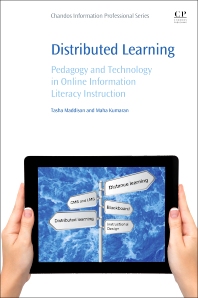LIMITED OFFER
Save 50% on book bundles
Immediately download your ebook while waiting for your print delivery. No promo code is needed.
The field of distributed learning is constantly evolving. Online technology provides instructors with the flexibility to offer meaningful instruction to students who are at a di… Read more

LIMITED OFFER
Immediately download your ebook while waiting for your print delivery. No promo code is needed.
The field of distributed learning is constantly evolving. Online technology provides instructors with the flexibility to offer meaningful instruction to students who are at a distance or in some cases right on campus, but still unable to be physically present in the classroom. This dynamic environment challenges librarians to monitor, learn, adapt, collaborate, and use new technological advances in order to make the best use of techniques to engage students and improve learning outcomes and success rates. Distributed Learning provides evidence based information on a variety of issues, surrounding online teaching and learning from the perspective of librarians.
Librarians in Academic Libraries who are responsible for delivering instruction in a distributed learning environment, and librarians in Public Libraries, School Libraries and possible Special Libraries who are responsible for delivering instruction and would like to explore alternative methods of delivery
TM
MK